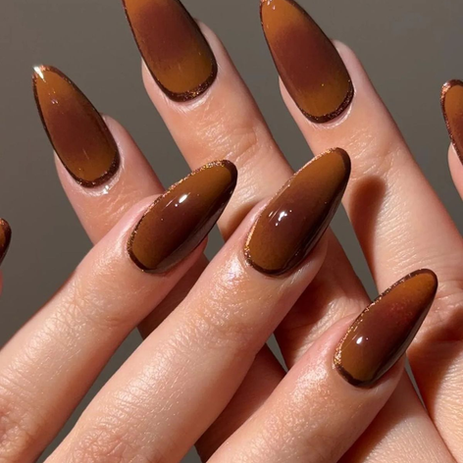Introducing Samsung’s Thinnest Flagship Yet: The S25 Edge
- BY MUFARO MHARIWA

- Jun 6, 2025
- 4 min read

Should phones be thinner? It’s been more than a decade since wafer-thin phones were the gold standard of innovation. Back then, every new model seemed to shave off a millimetre in the race for sleekness. But somewhere along the line, the industry pivoted. Bigger batteries, better cameras, advanced cooling systems; all of these demanded more space, not less. So the push for thinness quietly faded into the background.
Now, Samsung wants to bring it back with the Galaxy S25 Edge: the company’s slimmest flagship in years. It’s sleek, impossibly light, and unapologetically focused on form. But here’s the question we can’t ignore in 2025: does being thin still matter?
The Allure of Thin
There’s something undeniably attractive about a thin phone. It feels modern, light, and effortlessly cool: like holding a slice of the future. The S25 Edge leans into that vibe completely. It’s designed for the user who doesn’t want to lug around a mini tablet or juggle features they’ll never use.
Advertisement
If the Ultra is too much; too big, too heavy, too “extra” with its S Pen and multi-lens setup, then the S25 Edge is the answer. It trims the fat without sacrificing everyday flagship performance. In many ways, it’s just a reworked S25+. Same display size, same chipset, same software support. The key difference? It’s noticeably slimmer and lighter.
And that matters. For everyday users who want top-tier performance without the “Ultra overhead,” the S25 Edge offers a compelling middle ground. It’s not about compromising, it’s about cutting out what you don’t need.
Where Thinness Bites Back
There’s a reason most flagship phones haven’t chased razor-thin builds in recent years, and it’s not just about battery size. Making a phone this slim means real trade-offs in thermals, battery life, and internal component layout. And the S25 Edge is no exception.
Let’s start with the basics: the phone packs a 3900mAh battery. It’s not terrible, but it’s also not competitive in a market where 5000mAh is fast becoming standard, especially for a phone in this price range. It also skips out on the industry leading newer silicon-carbon battery tech, meaning users may have to lean more heavily on fast charging just to get through the day.
Then there’s heat. The Snapdragon 8 Gen 3 Elite is a beast, and like all powerful chipsets, it needs proper cooling. But when there’s less internal space to work with, heat dissipation becomes a challenge. That could affect sustained performance, and we’ll only know for sure after using the phone for some time. And of course, there’s durability. While Samsung’s build quality is typically strong, a thinner phone naturally feels more delicate. Is it elegant or just fragile? That depends on how it holds up in everyday use.
I would argue that foldable phones are the better candidates for ultra-thin design because they offer more internal real estate when opened up. The S25 Edge, while sleek, might be pushing a form factor that’s already at its limits.
Advertisement
A Bigger Game at Play
You can’t look at the S25 Edge’s design choices in isolation, not when there’s an even louder conversation swirling in the background: Apple’s rumoured iPhone 17 Air. Whispers suggest it’ll be the thinnest iPhone yet. And if history has taught us anything, it’s that when Apple makes a move, the industry pays attention.
Samsung knows this game. It’s played it before; often dropping features or design tweaks just ahead of Apple launches, hoping to steal some thunder. The S25 Edge could very well be a strategic play to beat Apple to the “look how thin it is” headlines.
There’s also the bigger picture: is this design direction really about users? Or is it about bragging rights? In an industry racing for attention, thinness might be more of a PR flex than a meaningful upgrade. And for the average user juggling camera quality, battery life, and longevity, that flex may not be worth the trade-off.
The S25 Edge Is Bold, But Who’s It For?
Let’s give credit where it’s due, the Galaxy S25 Edge is an impressive feat of engineering. Priced at $1,099 (around R20,500), it sits neatly between the base S25 and the top-tier Ultra, offering premium specs without the Ultra's size or stylus. It’s sleek, it’s refined, and it fits a full flagship experience into one of the thinnest bodies we’ve ever seen from Samsung.
Sitting between the base S25 and the feature-heavy Ultra, the Edge is aimed squarely at users who want top-tier performance without the weight, literal or figurative, of Samsung’s most powerful phone. It’s cheaper than the Ultra, more premium than the base model, and neatly positioned as the minimalist’s flagship.
Advertisement
But here’s the catch: in 2025, is thinness still a priority? Most people care more about battery life, camera performance, and long-term reliability — not whether their phone can slide under a door. And with a smaller battery and less internal space for heat dissipation, the S25 Edge might struggle to keep up when pushed hard.
So who’s this phone for? Probably the style-conscious user who wants a premium device that looks and feels modern, and doesn’t mind charging a bit more often. It’s not trying to be everything for everyone — and maybe that’s the point.
Samsung is asking us to care about thinness again. Whether we do… well, that’s up to the rest of us.































































